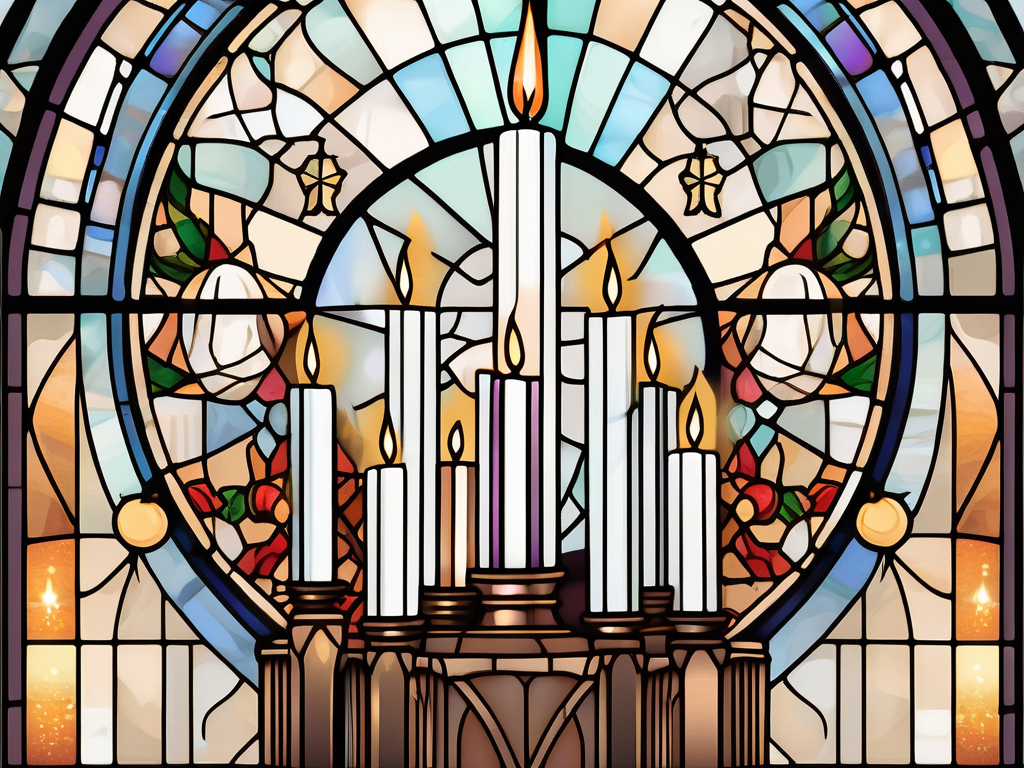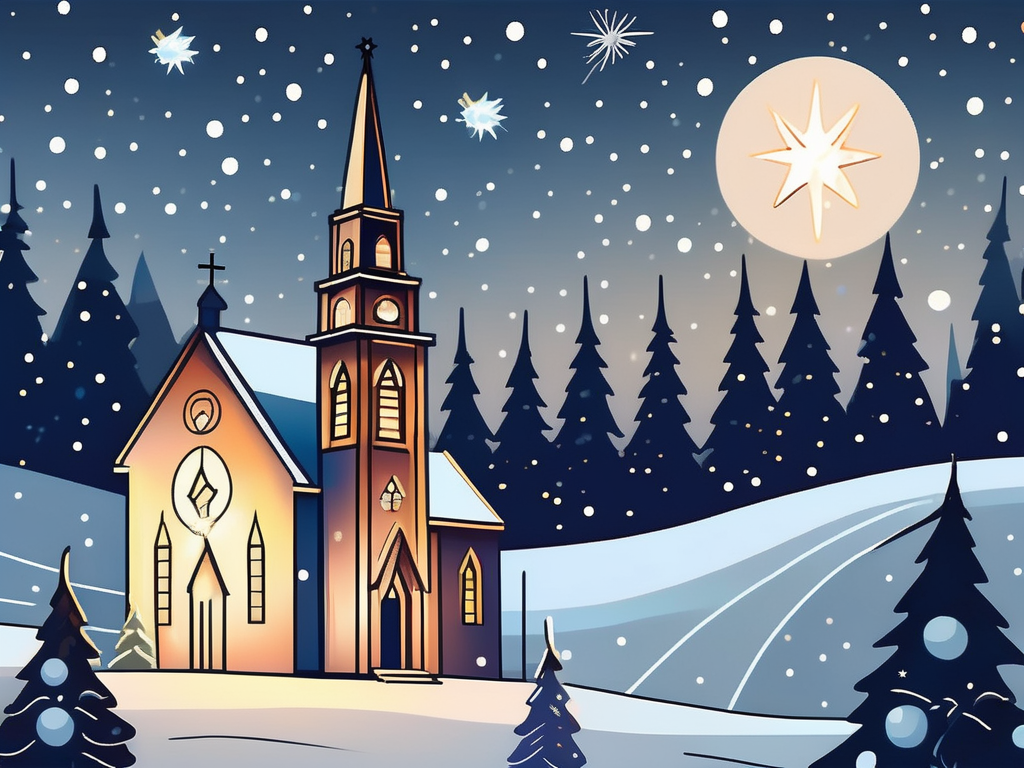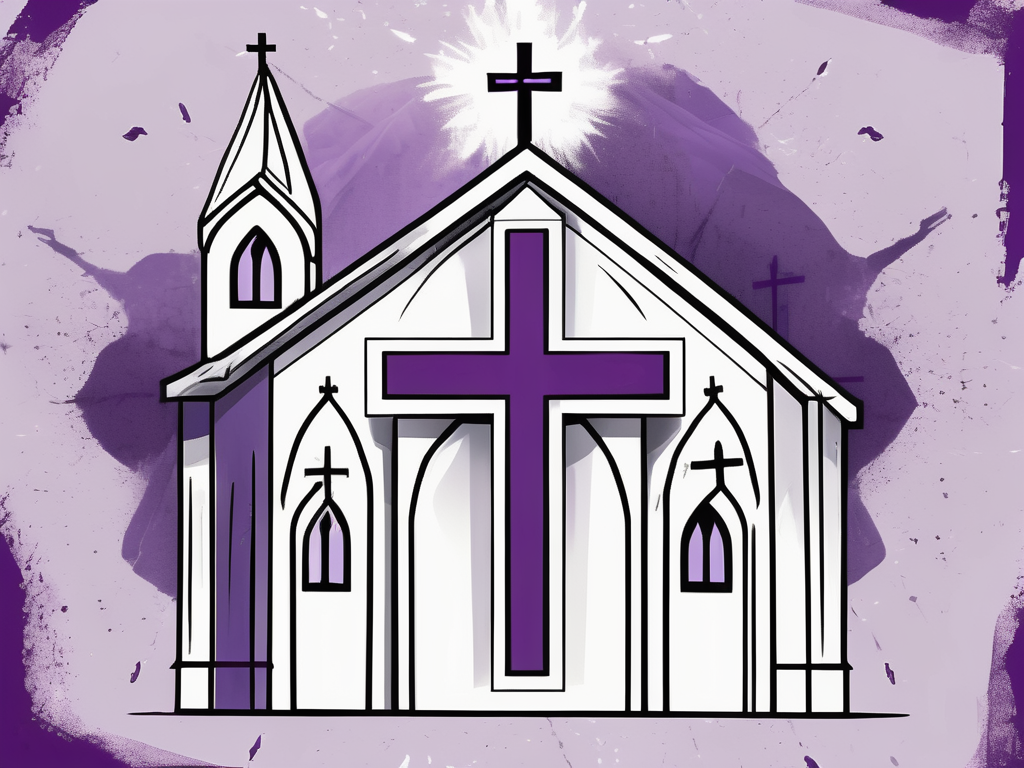Advent is a significant time in the Christian calendar that anticipates the celebration of Christmas. It is a season of preparation and expectation, reminding believers of the coming of Jesus Christ. Understanding the concept and symbolism of Advent can deepen our appreciation for this sacred time.
Understanding the Concept of Advent
Advent, deriving from the Latin word “adventus” which means “coming,” refers to the time when Christians prepare for the birth of Jesus. It is a time of reflection, repentance, and joyful anticipation. Advent begins on the fourth Sunday before Christmas and lasts for four weeks, leading up to December 25th. During this period, believers engage in various traditions and practices that hold great meaning within the Christian faith.
The Origin and History of Advent
The tradition of Advent dates back to the early centuries of Christianity. The exact origin is not definitive, but its roots can be found in both Eastern and Western Christian traditions. It began as a period of fasting and penance in preparation for the feast of the Nativity. Over time, Advent became associated with the anticipation of Christ’s second coming as well as his first.
During the Middle Ages, Advent became more structured with the introduction of Advent wreaths, candles, and liturgical readings. The Advent wreath, typically made of evergreen branches, symbolizes eternal life and the circular nature of time. The candles, often four in number, represent the four weeks of Advent. Each week, a new candle is lit, signifying the increasing light of Christ entering the world.
Furthermore, Advent is marked by the reading of specific biblical passages that highlight the prophecies of the Messiah’s birth and the anticipation of his coming. These readings serve as a reminder of God’s faithfulness throughout history and the fulfillment of his promises through Jesus.
Today, Advent is celebrated by Christians worldwide, both in traditional and contemporary ways, as they seek to enter into the true spirit of Christmas. It is a time of preparation, not only for the joyful celebration of Jesus’ birth but also for the spiritual journey of faith and transformation.
The Theological Significance of Advent
Advent carries deep theological significance for Christians. It symbolizes the hope, preparation, joy, and love that come with the birth of Jesus. It is a time to reflect on the promises of God and the fulfillment of prophecy through the coming of the Messiah.
Advent reminds believers to prepare their hearts and minds to welcome Jesus, not just as a historical event but also as a transformative spiritual experience. It helps Christians meditate on the humility and humanity of Christ, as well as prepare for his return in glory.
During Advent, Christians are encouraged to engage in acts of kindness, generosity, and self-reflection. It is a time to examine one’s own life and seek forgiveness for past wrongdoings. Through prayer, fasting, and acts of service, believers strive to align their hearts with the message of hope and redemption that Jesus brings.
Furthermore, Advent serves as a reminder that the story of Jesus’ birth is not just a one-time event but an ongoing invitation to experience God’s love and grace. It invites believers to deepen their relationship with Christ and to share his love with others.
In conclusion, Advent is a significant season in the Christian calendar that prepares believers for the celebration of Jesus’ birth. It has a rich history rooted in tradition and carries deep theological meaning. Through various practices and reflections, Christians seek to enter into the true spirit of Christmas and embrace the transformative power of Christ’s coming.
The Four Sundays of Advent
Advent is a season of great anticipation and preparation for the birth of Jesus Christ. It is a time when believers reflect on the hope, preparation, joy, and love that Christ’s coming brings to the world. Advent is divided into four Sundays, each focusing on a particular theme that contributes to the overall narrative of anticipation and preparation. These themes are traditionally represented by the lighting of Advent candles.
The first Sunday of Advent is a time of hope. A single candle is lit, symbolizing the hope that Christ’s coming brings to a broken world. This candle represents the hope of salvation and deliverance, reminding believers of the promise that God will fulfill. It encourages them to trust in God’s faithfulness and to find hope even in the midst of darkness.
The second Sunday of Advent is a time of preparation. Another candle is lit, usually purple or blue, signifying preparation. This candle reminds believers to prepare their hearts and lives for the coming of Jesus. It encourages self-examination, repentance, and the readiness to receive and share the love of Christ. It is a time to reflect on one’s own spiritual journey and to make necessary changes to align with God’s will.
As Advent progresses, the third Sunday brings the lighting of a pink or rose-colored candle, symbolizing joy. This candle represents the joy that comes with the imminent arrival of the Messiah. It invites believers to rejoice in the hope and love found in Christ, even amidst the challenges and difficulties of life. It is a time to celebrate the good news of Jesus’ birth and to find joy in the knowledge that God is with us.
On the final Sunday of Advent, a fourth candle is lit, often purple, representing love. This candle symbolizes the love of God, which is fully revealed in the birth of Jesus. It calls believers to share this love with others and to remember that love is the ultimate gift of the Christmas season. It is a time to reflect on the unconditional love that God has shown us and to extend that love to those around us.
Throughout the four Sundays of Advent, believers engage in various traditions and practices to deepen their spiritual journey. They may participate in Advent wreath lighting ceremonies, where each candle is lit in sequence, accompanied by prayers and readings. They may also engage in acts of charity and service, spreading hope, joy, and love to those in need. Advent is a time of reflection, prayer, and anticipation, as believers prepare their hearts to welcome the birth of Jesus Christ.
Advent Traditions and Symbols
Advent is a season filled with rich traditions and symbols that help believers engage with the spirit of anticipation and joy. These traditions not only create a sense of unity among believers but also serve as reminders of the true meaning of Christmas.
The Advent Wreath and Candles
One of the most iconic symbols of Advent is the Advent wreath. This circular arrangement of evergreen branches holds deep symbolism. Its circular shape represents eternity, signifying the everlasting love and hope that Jesus brings. The evergreen branches themselves symbolize eternal life, even in the midst of winter’s darkness.
The Advent wreath is adorned with four candles, typically three purple and one pink. Each candle represents one of the four Sundays of Advent. As the weeks progress, an additional candle is lit, illuminating the growing anticipation and joy in the hearts of believers.
As families gather around the Advent wreath, they participate in a beautiful ritual. Together, they light the candles, read Scripture passages, and offer prayers. It is a time for reflection, discussion, and contemplation as they prepare their hearts and homes to receive the gift of Jesus.
The Advent Calendar
Another cherished tradition during Advent is the Advent calendar. This calendar, often adorned with festive images, consists of a series of compartments, each containing a surprise or a Bible verse. Advent calendars serve as a daily reminder of the hope and joy found in Christ’s birth.
Many families use Advent calendars as an opportunity to spend quality time together during this season. Each day, they open a compartment, read the Scripture or reflect on the message, and engage in activities that foster a deeper understanding of Advent’s significance. This tradition not only builds excitement for Christmas but also encourages spiritual growth and reflection.
The Jesse Tree
Another meaningful Advent tradition is the Jesse Tree. This tradition involves a tree or a branch adorned with ornaments that depict various events and biblical characters from the Old Testament. Each day, a new ornament is added, unveiling the story of God’s faithfulness and the lineage of Jesus.
The Jesse Tree serves as a visual reminder of God’s plan for redemption and the fulfillment of prophecy in Christ’s birth. It provides an opportunity for families to engage in storytelling, reflecting on the biblical narrative leading up to the birth of Jesus. As each ornament is added, the anticipation and excitement for Christmas grow.
Through these Advent traditions and symbols, believers are invited to journey through the season with intentionality and reflection. They serve as powerful reminders of the true reason for the season and help create a sense of unity and joy among believers worldwide.
The Liturgical Practices During Advent
Alongside the traditions and symbols, Advent also involves specific liturgical practices that guide believers in their spiritual journey throughout the season.
During the season of Advent, prayer and fasting play crucial roles in the lives of believers. These practices help create a sacred space, allowing individuals to focus on their relationship with God and seek spiritual renewal. Through prayers of confession, gratitude, and intercession, Christians make room for Christ’s presence in their lives and cultivate a posture of humility and dependence.
Prayer is an essential aspect of Advent, as it provides an opportunity for believers to communicate with God and express their hopes and desires for the coming of Christ. It is a time to reflect on the significance of Jesus’ birth and to seek guidance and strength in preparation for His arrival.
Fasting during Advent serves as a physical reminder of the spiritual hunger for Christ’s coming. By denying certain pleasures or distractions, believers intentionally create space for spiritual nourishment, focusing their hearts and minds on the true meaning of Christmas. Fasting can take various forms, such as abstaining from certain foods or activities, and it serves as a way to discipline the body and redirect the focus towards spiritual matters.
Furthermore, engaging in fasting during Advent can also foster a sense of solidarity with those who are less fortunate. By experiencing a temporary lack of material comforts, believers are reminded of the importance of compassion and generosity towards others, especially during the holiday season.
The Importance of Scripture Reading
Scripture reading is a central aspect of Advent. Many churches and families follow specific daily Advent readings, often referred to as the “Advent lectionary.” These readings guide believers through the biblical narrative, presenting passages from the Old Testament that serve as prophecies and foreshadowings of the Messiah.
Engaging with Scripture during Advent allows believers to journey through the anticipation and rejoicing of God’s people as they await the coming of the Messiah. It brings to life the promises of God and the fulfillment found in Jesus Christ. Reading and meditating on these passages can deepen one’s understanding of the significance of Jesus’ birth and foster a sense of awe and wonder.
Moreover, Scripture reading during Advent provides an opportunity for personal reflection and spiritual growth. As believers immerse themselves in the Word of God, they are encouraged to examine their own lives and align their thoughts and actions with the teachings of Jesus. It is a time to seek wisdom and guidance from the Scriptures, allowing the transformative power of God’s Word to shape and mold their hearts.
In conclusion, Advent holds profound meaning in Christianity. It encompasses the anticipation, preparation, and celebration of the birth of Jesus. Through understanding the concept, exploring the traditions and symbols, and engaging in liturgical practices, believers can enter into a meaningful and transformative Advent season. This sacred time invites us to reflect on the hope, joy, and love found in the coming of our Savior, Jesus Christ.












